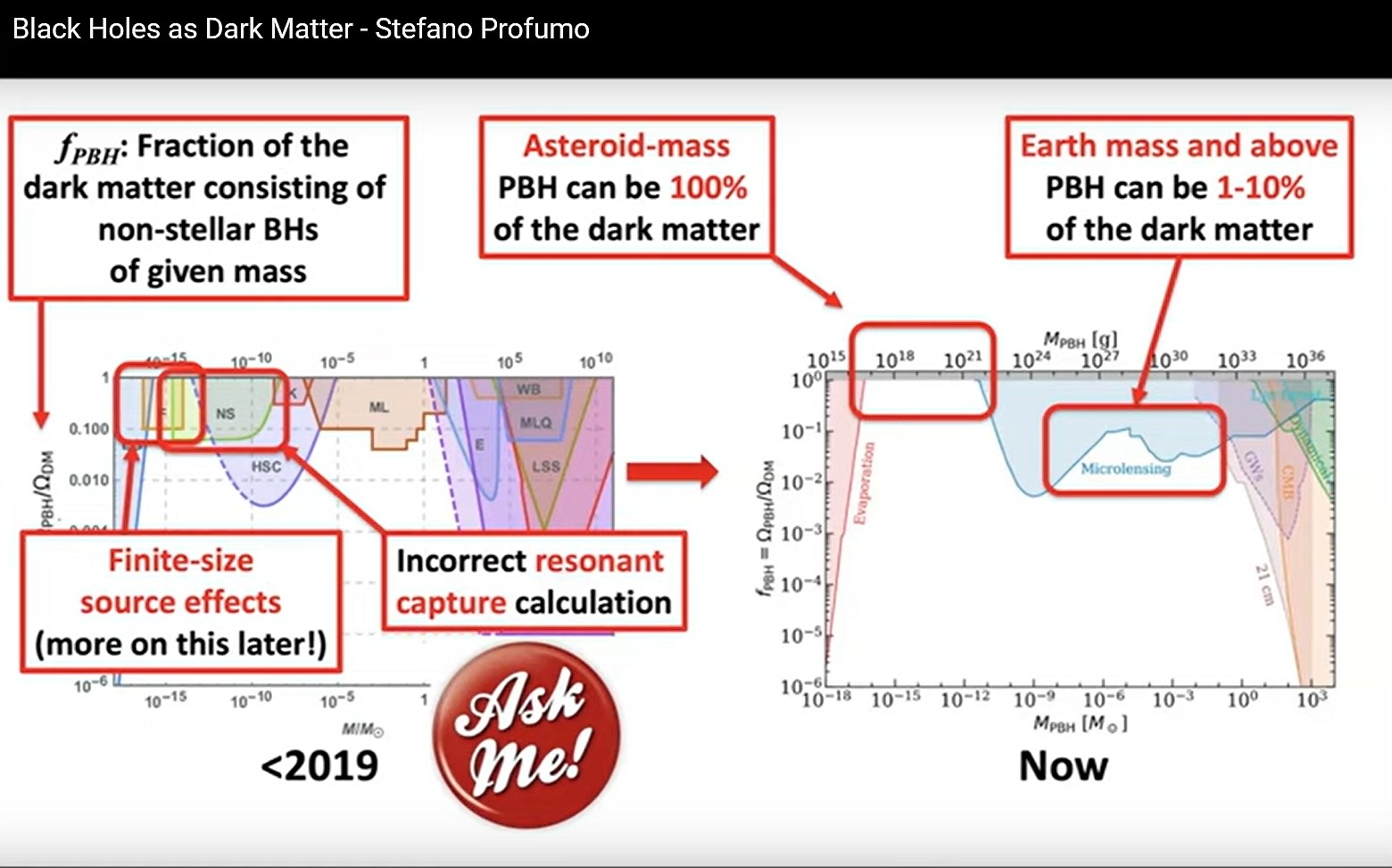John Carlos Baez on Nostr: For decades, astrophysicists have been saying dark matter can't be mostly black ...
For decades, astrophysicists have been saying dark matter can't be mostly black holes. But this may be wrong: new calculations suggest up to 100% of dark matter could be black holes about as heavy as asteroids that formed in the very early universe,
Beware: nobody knows how these 'primordial black holes' would be formed, and nobody has ever seen one! So what's new?
Physicists had done many calculations claiming to rule out black holes of various different kinds as dark matter. For example, there can't be lots of black holes of Earth mass or heavier, since their gravity would focus light as they move in front of stars - and we've looked really hard and haven't seen many of these 'microlensing' events. There also can't be lots of extremely light black holes, because Hawking showed these would explode, and we haven't seen that.
In fact, physicists argued there's just no way black holes in *any* mass range could account for most of the dark matter!
But recently I decided to watch YouTube videos from the Institute of Advanced Studies while pedaling the exercise bike at the gym, to make me look more intellectual, so tough guys won't pick on me.
And I saw a great talk by Stefano Profumo claiming that some of these arguments were wrong! He and his coauthors argue that black holes with masses between 10¹⁷ and 10²² grams are not ruled out: they could in theory account for *all* the dark matter. I had to look it up: the biggest asteroid, Ceres, has a mass of 10²⁴ grams. So these are like small asteroid masses.
He also talks about ways to search for such black holes!
Below you see the old limits on primordial black holes in different mass ranges... and the new ones.
(1/2)

Beware: nobody knows how these 'primordial black holes' would be formed, and nobody has ever seen one! So what's new?
Physicists had done many calculations claiming to rule out black holes of various different kinds as dark matter. For example, there can't be lots of black holes of Earth mass or heavier, since their gravity would focus light as they move in front of stars - and we've looked really hard and haven't seen many of these 'microlensing' events. There also can't be lots of extremely light black holes, because Hawking showed these would explode, and we haven't seen that.
In fact, physicists argued there's just no way black holes in *any* mass range could account for most of the dark matter!
But recently I decided to watch YouTube videos from the Institute of Advanced Studies while pedaling the exercise bike at the gym, to make me look more intellectual, so tough guys won't pick on me.
And I saw a great talk by Stefano Profumo claiming that some of these arguments were wrong! He and his coauthors argue that black holes with masses between 10¹⁷ and 10²² grams are not ruled out: they could in theory account for *all* the dark matter. I had to look it up: the biggest asteroid, Ceres, has a mass of 10²⁴ grams. So these are like small asteroid masses.
He also talks about ways to search for such black holes!
Below you see the old limits on primordial black holes in different mass ranges... and the new ones.
(1/2)
